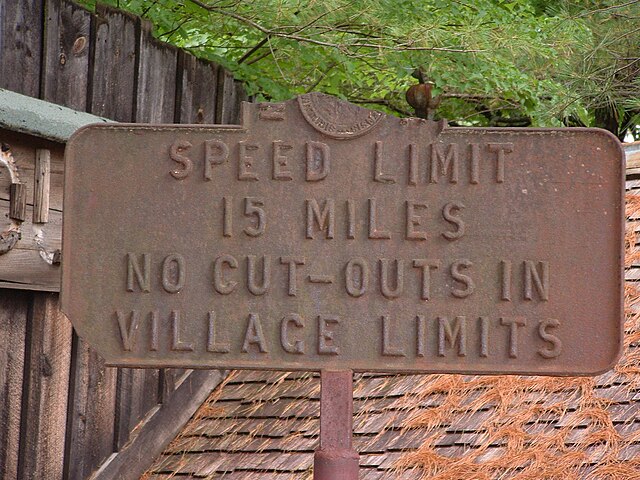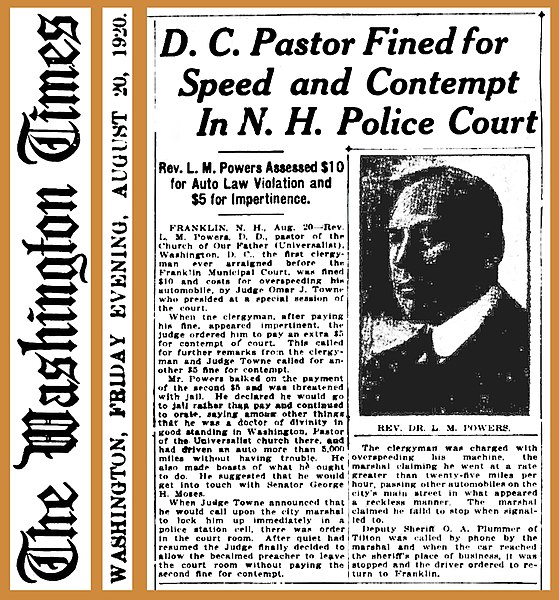Arrests of Ulysses S. Grant
There are three reported arrests of Ulysses S. Grant by officers of the Metropolitan Police Department of the District of Columbia (MPD), all for speeding by horse. Grant, who led the Union Army to victory in the American Civil War, was widely known for his prowess as a horseman. The first of the reported two arrests were in 1866, when Grant was commanding general; the third is said to have occurred in 1872, when Grant was serving as the president of the United States. While of questionable historicity, the third is the best-known; if it did occur, this would make Grant the only U.S. president to have been arrested while in office.
Grant and Robert E. Bonner racing in a carriage in New York, as depicted in an 1868 lithograph
West in 1908
Speed limits on road traffic, as used in most countries, set the legal maximum speed at which vehicles may travel on a given stretch of road. Speed limits are generally indicated on a traffic sign reflecting the maximum permitted speed, expressed as kilometres per hour (km/h) or miles per hour (mph) or both. Speed limits are commonly set by the legislative bodies of national or provincial governments and enforced by national or regional police and judicial authorities. Speed limits may also be variable, or in some places nonexistent, such as on most of the Autobahnen in Germany.
A road sign shows maximum and minimum speed limit for different types of vehicle on expressway in China. Speed limit signs are shown in kilometres per hour.
Historic New Hampshire speed limit sign
In 1920 a pastor was fined US$10 for "overspeeding his machine ... at a rate greater than 25 mph (40 km/h) ... in what appeared to be a reckless manner."
Example variable speed limit sign in the United States, in mph






